5 min to read
Natural building workshop at Alt Shift festival.
How to introduce people to natural building?

In the summer of 2022 occurred the first edition of the Alt Shift degrowth festival, in the north of Austria. I was invited alongside some eco-builder friends to facilitate a natural building workshop as one of the main activities of the event.
Introducing to natural building
Degrowth is a subject that is often tackle on a political or economic scale. A concept which has been theorized in academia, and that sometimes troubles to be concretized in practical fields. This is an observation that I’ve assembled during some of my experiences, and which fitted pretty well the festival audience: mostly young academics which have a very good knowledge of the theoretical aspects of degrowth, but who didn’t had the occasion to work on practical applications on the field.
This was our main objective for this workshop: make people understand how degrowth can be applied for architecture and construction, and how concretely natural building can be both an answer to some issues of the industry, and also a tool for people to reappropriate this field.
The preparation
For the workshop, we had 3 sessions of 3-4 hours. That’s enough for the participants to collectively build something that would stay in the place. This is a very good experience to live, but in a degrowth perspective, it was important and relevant to us that we build something useful for the land and for the owner of the place. It wouldn’t make any sense to use resources and time to create something useless - this is a key application of degrowth in all industries.
So, with the team of facilitators, we arrived 1 week earlier to discuss with the land owner, find a good project and prepare the foundations. We decided to improve a small wooden yurt with back walls, adapting this area into a cosier gathering space.
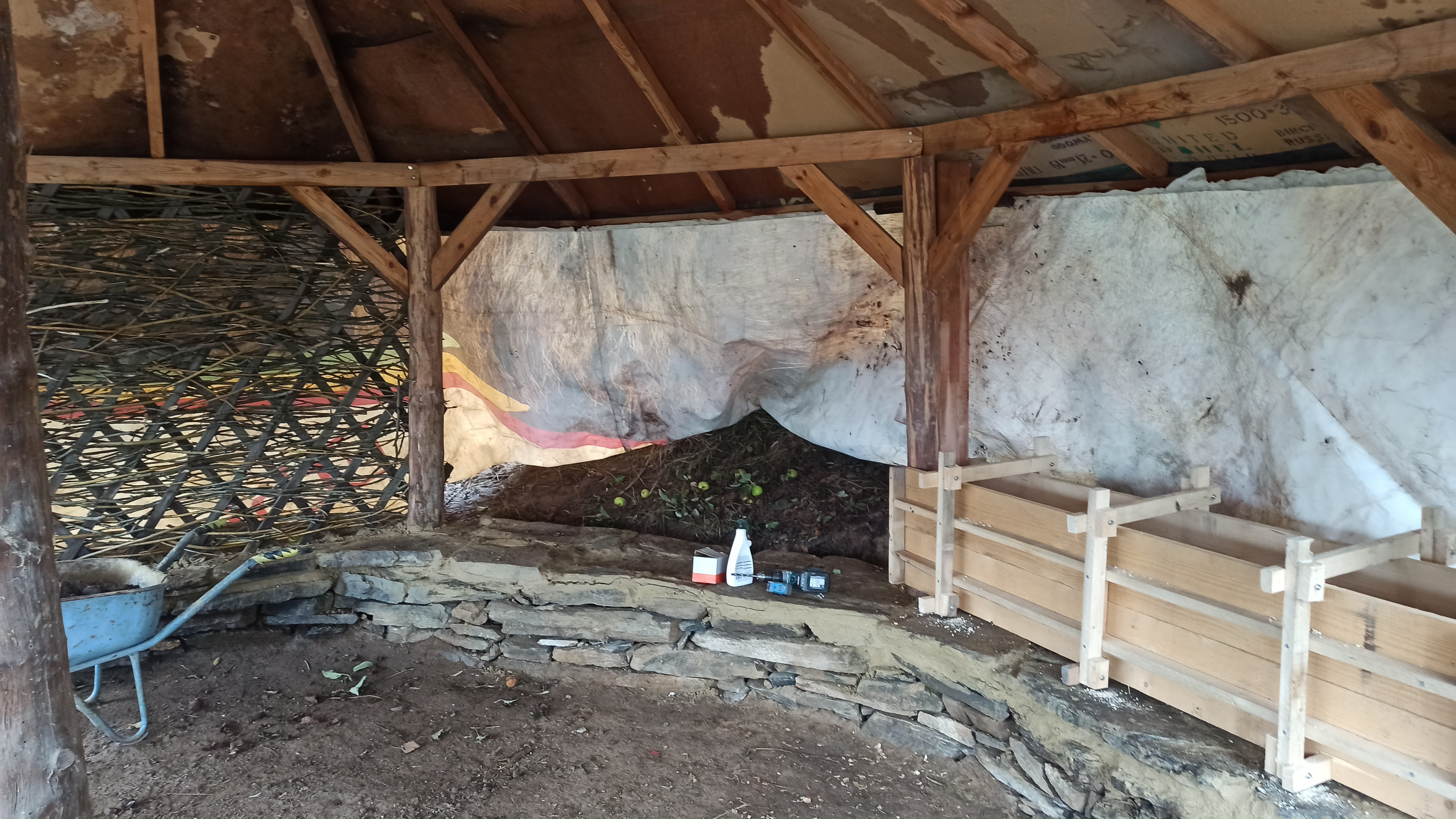
With the limited time available in the workshop, we actually prepared a lot beforehand. The area is very rainy, so we had to protect the future walls with solid “shoes”: we dug a trench to drain water away from the walls, and built drystone foundations to prevent water from infiltrating from the ground. We had access to a lot of large flat stones, so we made the structure extra-large so that it would also serve as a bench.
Now, we thought we had the time to build three walls with the participants, and to make the workshop more interesting for everyone, we decided to use three different earth-building techniques: rammed earth, cordwood and wattle and daub. With this variety, participants can be divided into small teams that could experience the whole construction process for these three techniques, from the mix to the building.
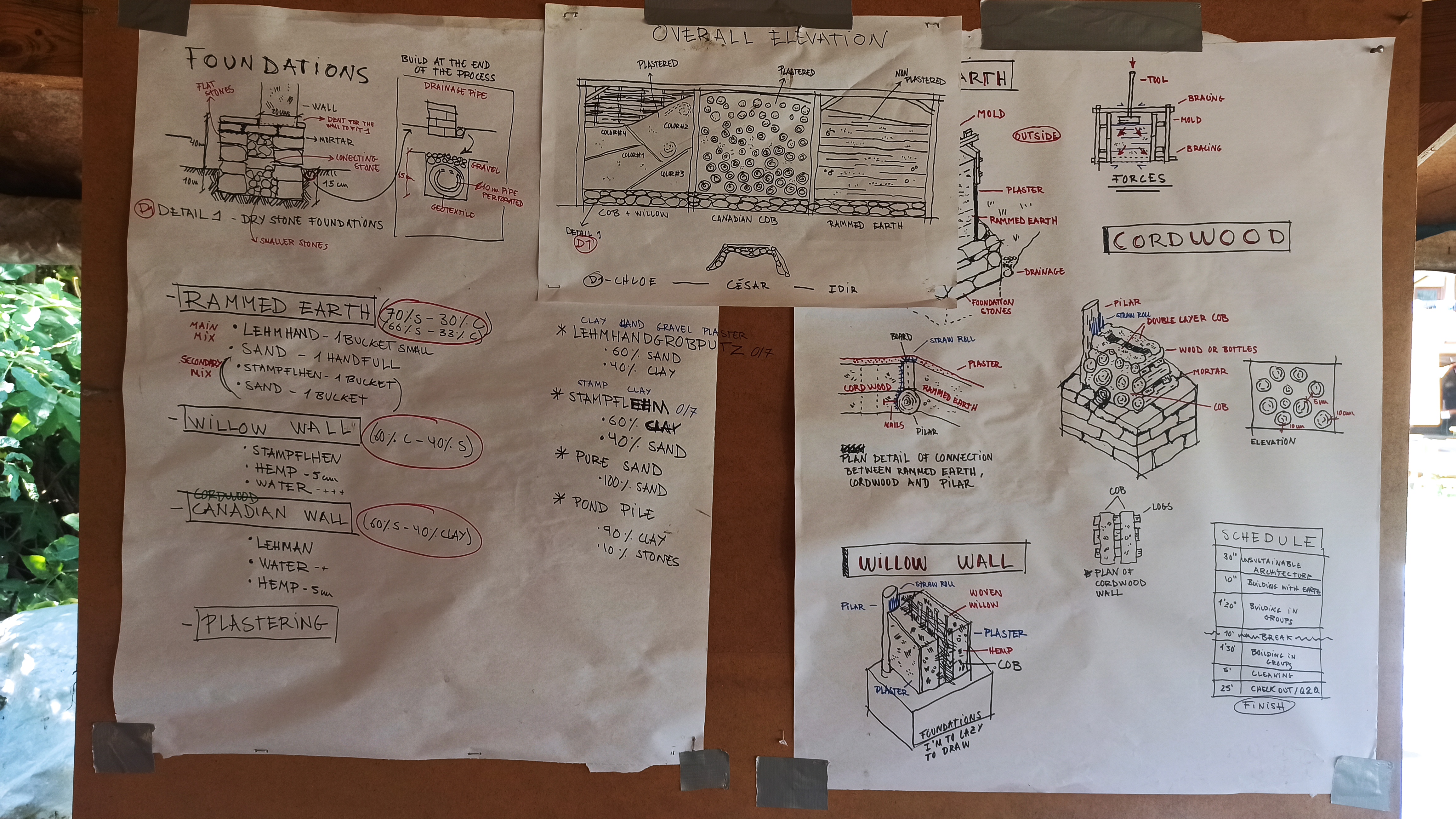
A central idea in degrowth building is to use local materials before anything else, so we didn’t reached to these specific walls fortuitously. As I said, we had a bunch of flat stones for the foundations, but what about the walls themselves?
-
Cordwood is a mix of cob and short logs. As we were in a forest environment it was particularly adapted: lot of wood available, recycling materials that were gonna be removed, and it also reduce by a lot the amount of earth that we would have extracted if we were to build this wall with plain cob. Considering the global humidity of the area, it would have been almost impossible to build a wall like this in 3 days without it falling on itself because of its wetness.
-
Wattle and daub is one of the easiest, used, and most accessible way of building with earth, but it requires a wattle structure. However, a intense storm occurred right before we arrived, and destroyed a willow in a neighbored house. So, we took advantage of it: we helped on removing the dead tree, chopping it, and we used it to create the wattle, effectively helping the villagers and preparing the wall.
-
We used rammed earth for our third wall mostly because it was a technique that we wanted to experience ourselves. It requires a formwork though, so we created one during our preparation time, designed to be easy to unmount between each layer, and reusable to build another wall.

The workshop
The workshop was divided in two parts: one related to degrowth in architecture, that I will not really talk about here because I wasn’t really involved into the making of this presentation (it was the work of César Tomé Pizarro). The second part related to natural building was composed of a theory lecture regarding materials, techniques and the various advantages of building with earth (heat inertia, low cost, local materials, …), and the practical part where the participants would finally get their hands in the dirt.
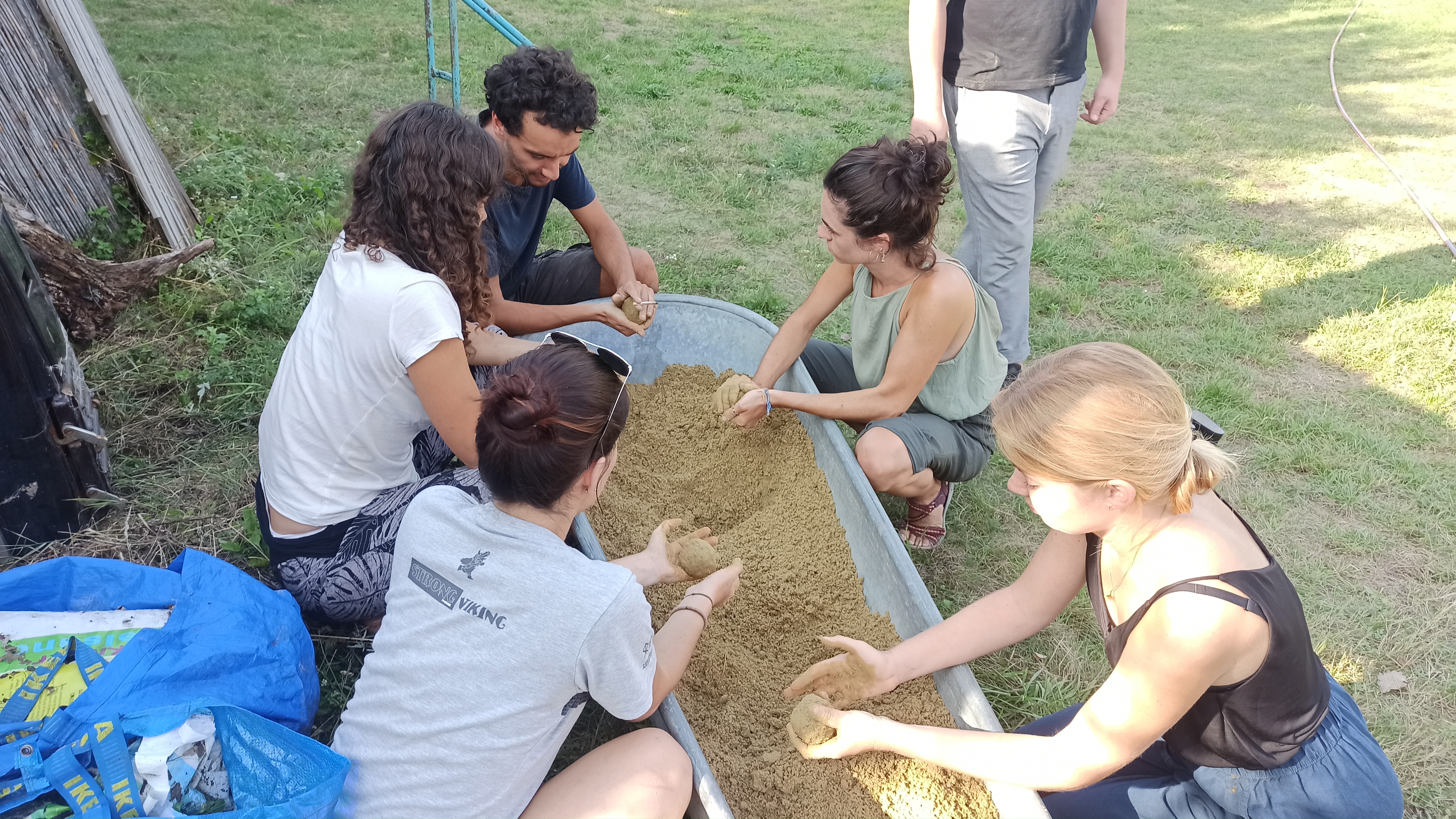
The activity went pretty well, and we managed to build our three walls! We had to shorten the height though, because of our time limit, but we managed to find an artistic way to handle this constraint.
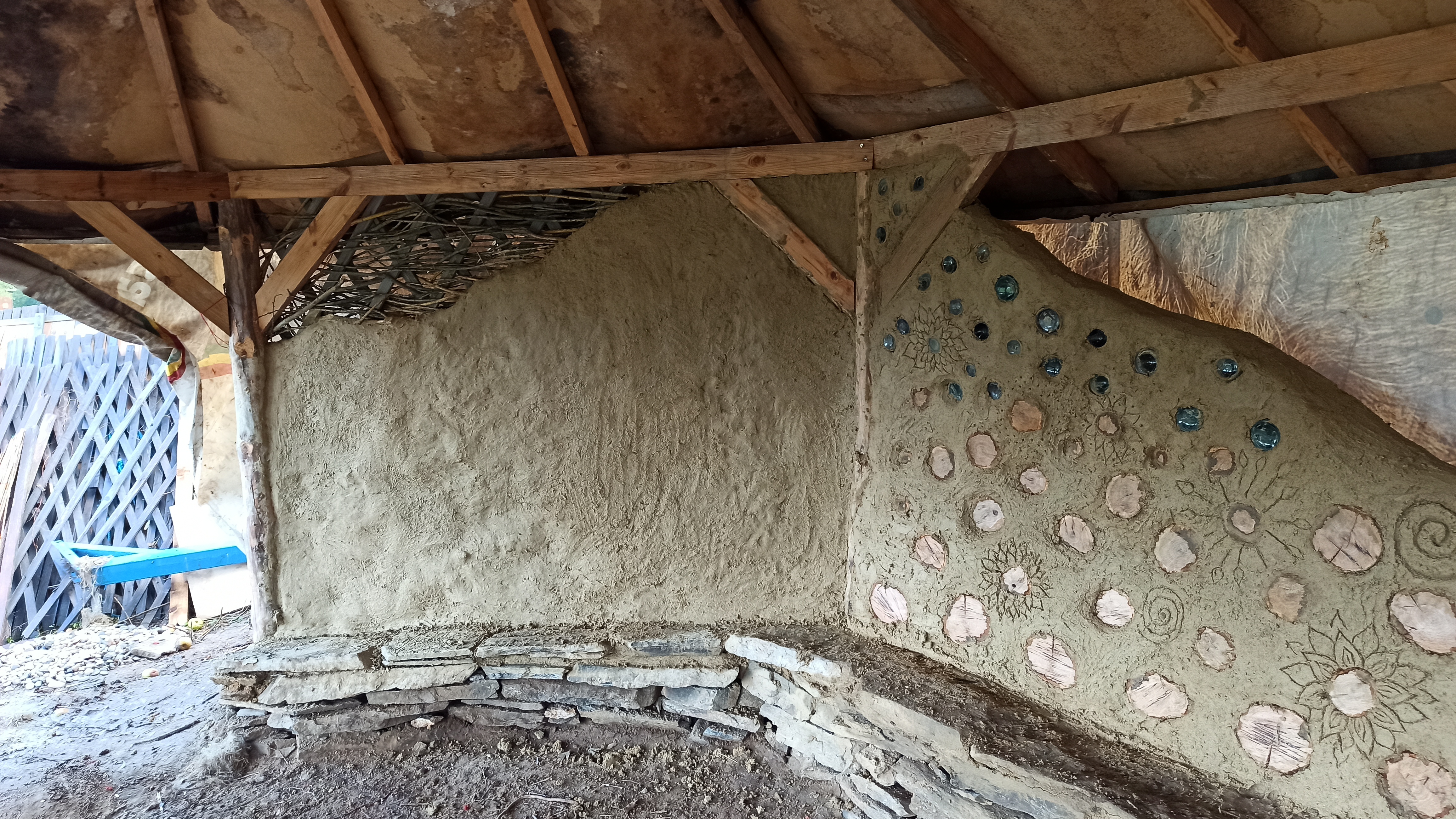
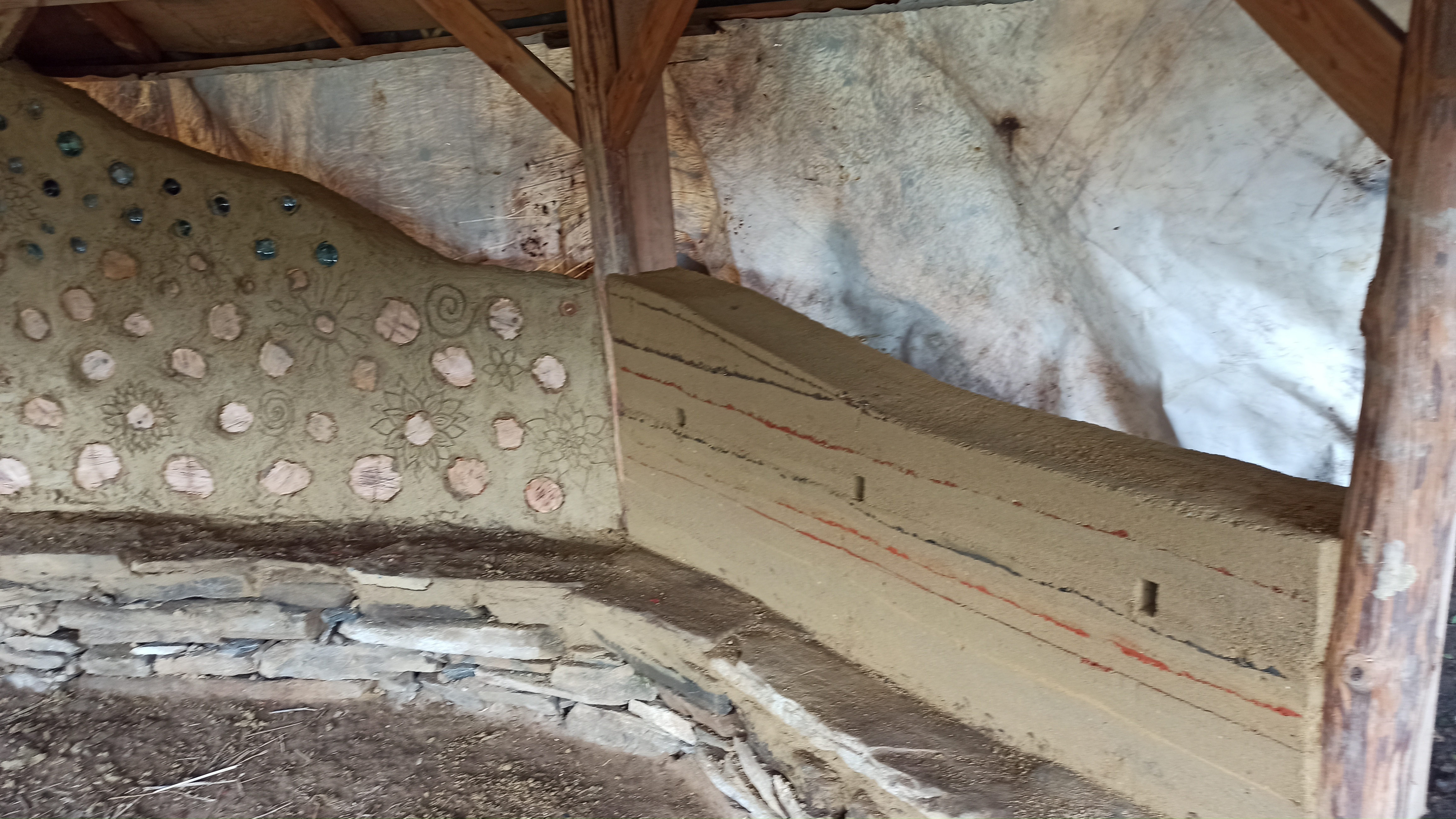
Conclusion
The workshop was really nice for the participants: from all the activities in the festival, this was the most practical and an experience out of the habits. People were thrilled by how empowering and accessible natural construction is, and for a field as impactful and critical, this is a very important realization.
For myself, I’ve learned a lot during this time. The techniques we used were novelty for the most part, and I really could understand more on how do these methods work and on their characteristics. Moreover, this made me realize how natural construction can be a key vector of information to sensitize people to degrowth.